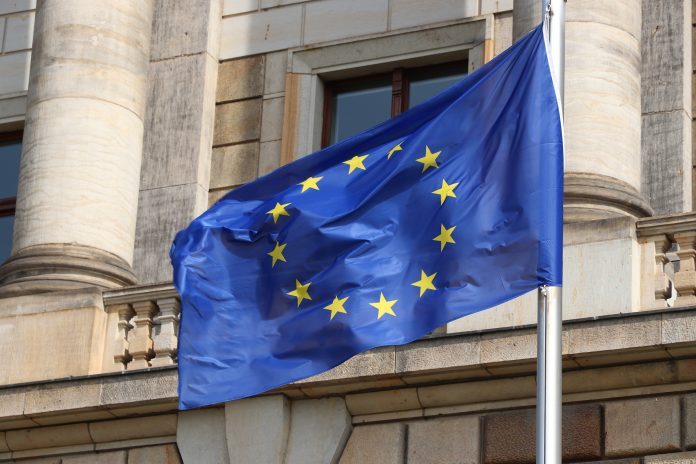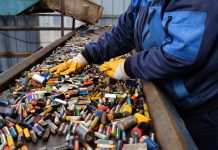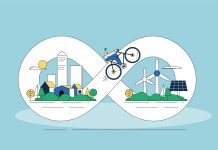Open Access Government investigates the strides being made by Executive Vice-President for the European Green Deal Frans Timmermans and the Commission to work towards the Green Deal’s ambitious goals during COVID-19
Executive Vice-President Frans Timmermans is leading the Commission’s work on the European Green Deal and its first European Climate Law to enshrine the 2050 climate-neutrality target into EU Law. The European Green Deal provides a roadmap with actions to boost the efficient use of resources by moving to a clean, circular economy, and also aims to restore biodiversity and cut pollution. (1) It outlines the investments needed and financing tools available and explains how to ensure a just and inclusive transition – benefitting everyone.
Circular Economy Action Plan
Despite 2020s unprecedented setbacks such as COVID-19, updated progress on the European Green Deal is being made, for example, the recent adoption of a new Circular Economy Action Plan. This provides a future-oriented agenda for achieving a cleaner and more competitive Europe in co-creation with economic actors, consumers, citizens and civil-society organisations. Aiming to accelerate the transformational change required by the European Green Deal, it will also build on the circular economy actions implemented in 2015/6. A circular economy is essential for achieving the Green Deals’ climate neutrality target and will reduce pressure on natural resources in Europe. This plan will ensure that the regulatory framework is streamlined and made fit for a sustainable future, that the new opportunities from the transition are maximised while minimising burdens on people and businesses.
Speaking in March on this topic, Timmermans stated: “To achieve climate-neutrality by 2050, to preserve our natural environment, and to strengthen our economic competitiveness, requires a fully circular economy. Today, our economy is still mostly linear, with only 12% of secondary materials and resources being brought back into the economy. Many products break down too easily, cannot be reused, repaired, or recycled, or are made for single use only. There is a huge potential to be exploited both for businesses and consumers.” Timmermans added that with this plan, the European Commission launches “action to transform the way products are made and empower consumers to make sustainable choices for their own benefit and that of the environment.” (2)
The plan presents a set of interrelated initiatives to establish a strong and coherent product policy framework that will make sustainable products, services and business models the norm and transform consumption patterns so that no waste is produced in the first place. It will be progressively rolled out, while further measures will be put in place to reduce waste and ensure that the EU has a well-functioning internal market for high-quality secondary raw materials. The EU’s capacity to take responsibility for its waste will be also strengthened. Furthermore, this plan aims also at ensuring that the circular economy works for people, regions, and cities, fully contributes to climate neutrality, and harnesses the potential of research, innovation and digitalisation.
Transition to a circular economy
The transition towards a circular economy is already underway, with frontrunner businesses, consumers and public authorities in Europe embracing this sustainable model. The Plan presents measures to:
- Make sustainable products the norm in the EU.
- Empower consumers.
- Ensure less waste.
- Focus on the sectors that use the most resources and where the potential for circularity is high. The Commission will launch concrete actions on:
• Electronics and ICT – a ‘Circular Electronics Initiative’ to have longer product lifetimes and improve the collection and treatment of waste.
• Batteries and vehicles – new regulatory framework for batteries for enhancing the sustainability and boosting the circular potential of batteries.
• Packaging – new mandatory requirements on what is allowed on the EU market, including the reduction of (over)packaging.
• Plastics – new mandatory requirements for recycled content and special attention on microplastics as well as biobased and biodegradable plastics.
• Textiles – a new EU Strategy for Textiles to strengthen competitiveness and innovation in the sector and boost the EU market for textile reuse.
• Construction and buildings – a comprehensive Strategy for a Sustainably Built Environment promoting circularity principles for buildings.
• Food – new legislative initiative on reuse to substitute single-use packaging, tableware and cutlery by reusable products in food services.
These measures demonstrate the active pledge from The Commission to make sure that the circular economy transition delivers opportunities for all, leaving no one behind.
COP26 postponed
Despite making significant advances in 2020, there are certain areas that have had to be put on hold amid efforts to contain the COVID-19 pandemic, such as COP26 (Conference of the Parties – the UN climate summit about climate change). On April 1st, Timmer- mans made a statement announcing these plans will be postponed, and that COP26 will not take place as planned in November 2020. “We acknowledge that global diplomatic activity is currently slowed down by the coronavirus crisis. And we understand that this decision is taken to avoid that COP26 would fail to meet expectations as a result of insufficient participation. This makes sense.” (3)
However, he assured us that the EU is just as commit- ted to climate neutrality by 2050 than ever, still aiming to meet all climate and energy targets in place. “As for the European Commission, we will not slow down our work domestically or internationally to prepare for an ambitious COP26, when it takes place.” (4) It is clear that despite the announcement to postpone the COP26 and the COVD-19 pandemic, the Commission committed to delivering the European Green Deal in the interests of the health of economy and people.
References
https://ec.europa.eu/info/files/annex-roadmap-and-key-actions_en https://ec.europa.eu/commission/presscorner/detail/en/IP_20_420 https://ec.europa.eu/commission/presscorner/detail/en/STATEMENT_20_583
Open Access Government
editorial@openaccessgovernment.org
www.openaccessgovernment.org
www.twitter.com/OpenAccessGov











